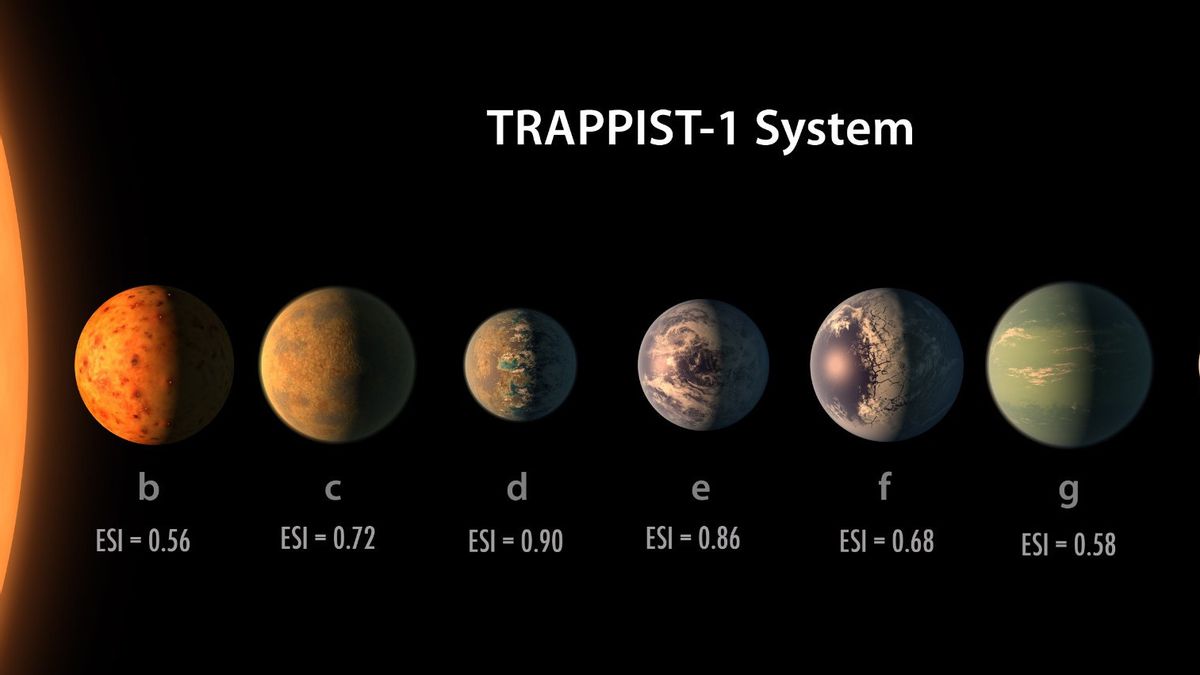
JAKARTA – The search for habitable planets continues to be carried out by NASA scientists. One of them is the planets in the star TRAPPIST-1 which have been confirmed to have atmospheres. Scientists are trying to determine the composition of the atmosphere and look for possible signs of life.
A NASA researcher points to an important factor that could reveal whether the exoplanet orbiting the star TRAPPIST-1 is potentially habitable.
Located in a star system some 40 light-years away, these planets have been targeted by the recently launched James Webb Space Telescope which will try to find out if this world has an atmosphere.
NASA astrobiologist Shawn Domagal-Goldman thinks the presence or absence of an atmosphere on the planet in the star TRAPPIST-1 is important in figuring out whether it is habitable or not.
"The moon gets as much energy from the sun as the Earth does, but it doesn't retain its atmosphere so it doesn't have oceans and it doesn't have a global biosphere," Domagal-Goldman told Newsweek.
“So this is a first-level question that has to be answered for the habitability of these worlds: whether they have an atmosphere or not. It turned out to be also the easiest thing Webb could observe," he added.
Next, he stressed the importance of observing the atmospheres of the TRAPPIST planets in the habitable zone. So that it becomes the focus of research for anyone in the next five or ten years.
Launching SputnikNews, if the planet does have an atmosphere, scientists must also determine the composition of this atmosphere. before drawing conclusions about the habitability of these worlds.
However, the presence of ozone and oxygen may be somewhat difficult to confirm as their rich atmospheres may have cloud decks that could hinder their detection, although scientists can also direct their observations to other potential biosignatures such as methane.
"If you look at methane in the context of other gases that destroy methane, and you know that those other gases are also being replenished - that's an indicator that the methane is not only there, but reproduced very quickly," Domagal-Goldman take notes.
"If you know that methane is being destroyed rapidly, it has to be refilled quickly and that fast charging is a biological sign."
The English, Chinese, Japanese, Arabic, and French versions are automatically generated by the AI. So there may still be inaccuracies in translating, please always see Indonesian as our main language. (system supported by DigitalSiber.id)

